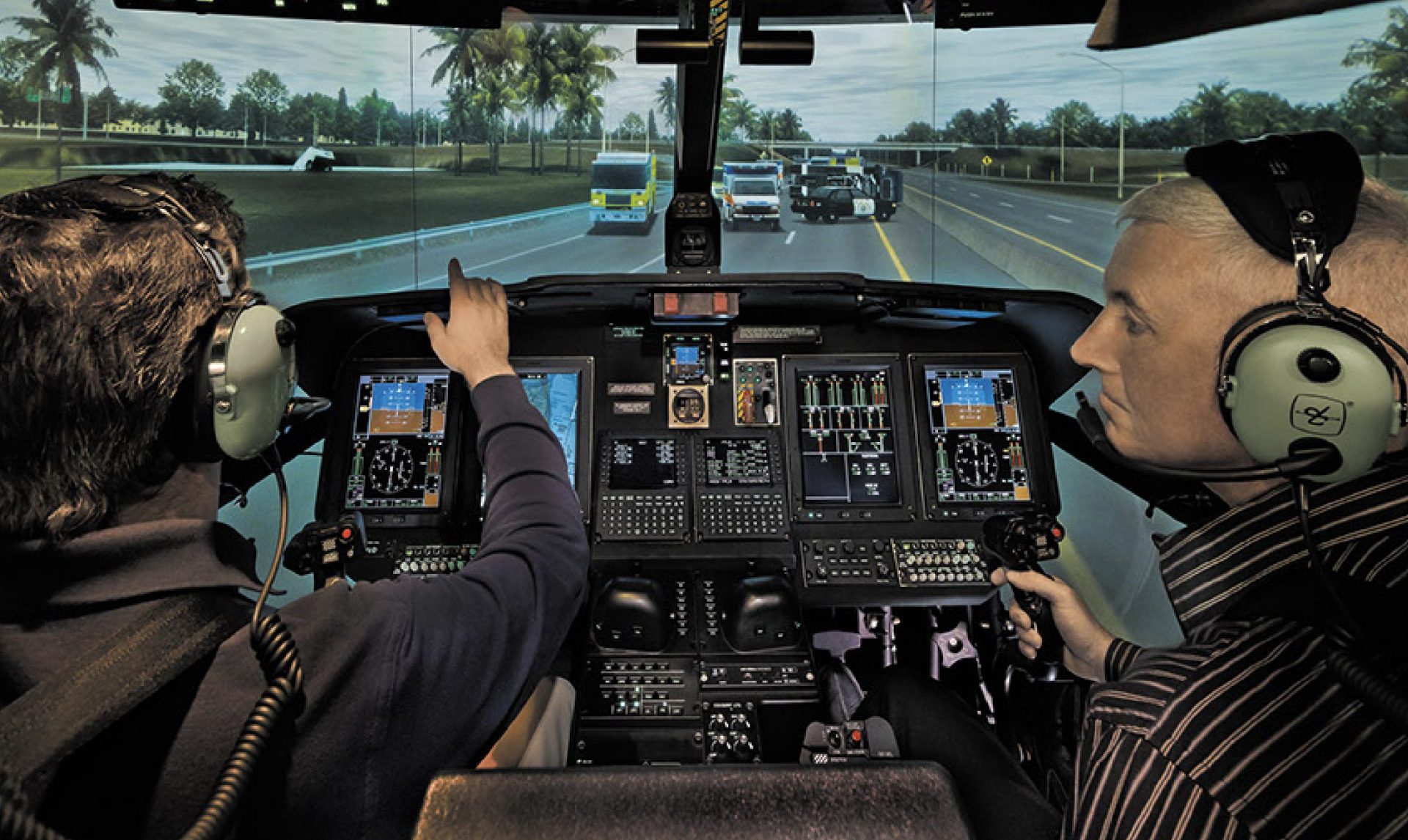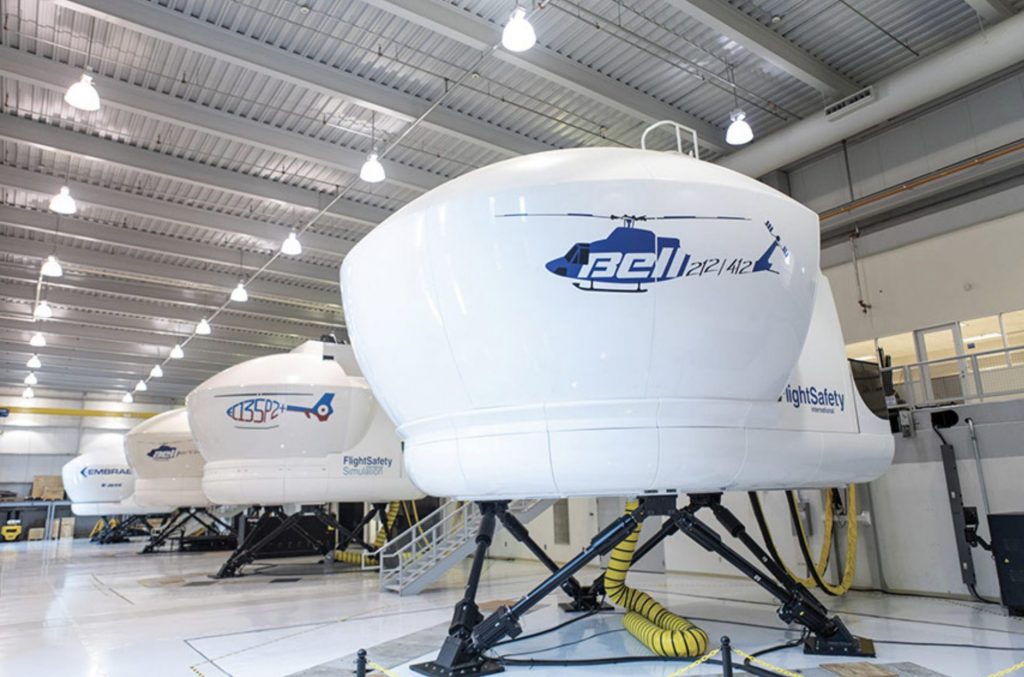
Advanced helicopter training saves lives
There’s no substitute to a helicopter’s versatility. No other aircraft matches its ability to get in and out of hazardous environments, co-ordinate search-and-rescue operations, or complete other life-saving missions.
Because helicopters act as powerful tools for commercial and public safety operations, it’s even more essential that pilots are fully prepared for all aspects of flight operations. Advanced helicopter training is as important as the condition of the aircraft itself.
When training is viewed as little more than a requirement to be met, the result is proficiency. But if training is not customised to the specific operations, crews may not be ready when a challenge presents itself. Being truly prepared to operate a helicopter, whether on the ground or airborne, requires skills sharpened to the highest degree.
FlightSafety International trains pilots to be prepared, not just proficient, using the most advanced technology and simulation to guide them through a variety of mission-specific scenarios and test their skills. It focuses on all aspects of the flight, from high-fidelity simulation and realistic airborne motions to the human factors that account for challenges in real-life situations.
Advanced helicopter training courses
Experienced instructors show how situational awareness, conflict resolution and communication skills combat issues that may arise in a helicopter. FlightSafety’s Advanced Helicopter Crew Resource Management (CRM) course (https://resources.flightsafety.com/advanced-pilot-training/advanced-pilot-training-advanced-helicopter-crew-resource-management/) shows how effective crew performance and decision-making can overcome situations caused by fatigued or stressed pilots.
Another area of advanced training focuses on inadvertent instrument meteorological conditions (IMC) and the dangers they pose for helicopter pilots. FlightSafety gives operators tools to avoid IMC accidents before they happen, as well as to learn preflight and inflight strategies to prepare for the worst.
The highest Level D full flight simulators, built by FlightSafety, can realistically replicate IMC conditions to allow pilots to safely prepare for any scenario, rather than during the chaos of an in-air event.

Training for any mission
FlightSafety works with pilots from governments and companies around the world to develop curriculum specific to the missions they need to fly. The result is a more realistic flight experience, rather than just the hypothetical scenario one might study in the classroom.
For example, instructors prepare Bell 412, AW139 and Sikorsky Blackhawk operators on aerial firefighting scenarios with mission-specific training profiles. The high-fidelity visual system displays life-like forest or ridgeline fires and allows pilots to overfly them just like they would in an actual aircraft. After the pilot drops the fire-retardant, a FlightSafety instructor reduces the weight on the sling load to replicate that the payload has been deployed.
Specialised scenes cover mountains, forests and other terrain to allow operators to train exactly as they fly. For example, oil and gas operators with Bell 412 and AW139 helicopters can train to land on offshore platforms, with all levels of weather conditions perfectly replicated.
Medical services, such as medevac and air ambulance, train their pilots how to perform life-saving work during harrowing situations, when time is at a premium. Specific programs, including NVG, are geared for pilots of EC145, EC135, AS350B3 and Bell 407GXP helicopters. Fixed-wing operators benefit from training specific to the Pilatus PC-12 and PC-24 aircraft.
Prepared, not just proficient
If you asked them, most pilots, flight crews and maintenance technicians would claim they are proficient. But that’s the right answer to the wrong question. Instead, they should ask themselves whether they are prepared for any and every situation. That answer could be very different.
The safety of the crew and the passengers they fly depend on advanced helicopter training that goes beyond proficiency.













